In November 2021, several residents had reported a damp spot on the driveway leading to 150B Camino Barranca. When Jock looked, he thought it was dew since it seemed to appear in the mornings and clear up later in the day.

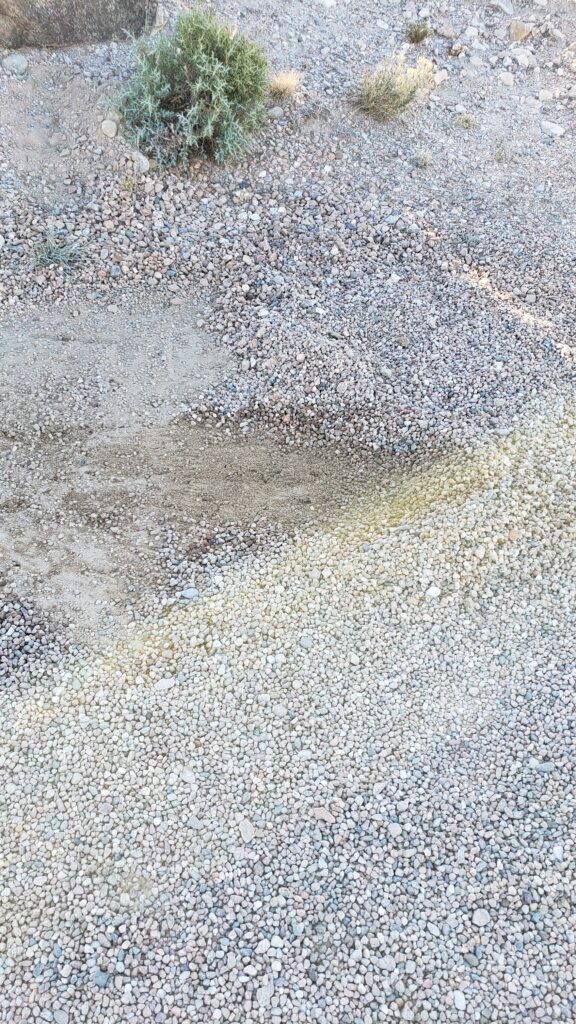
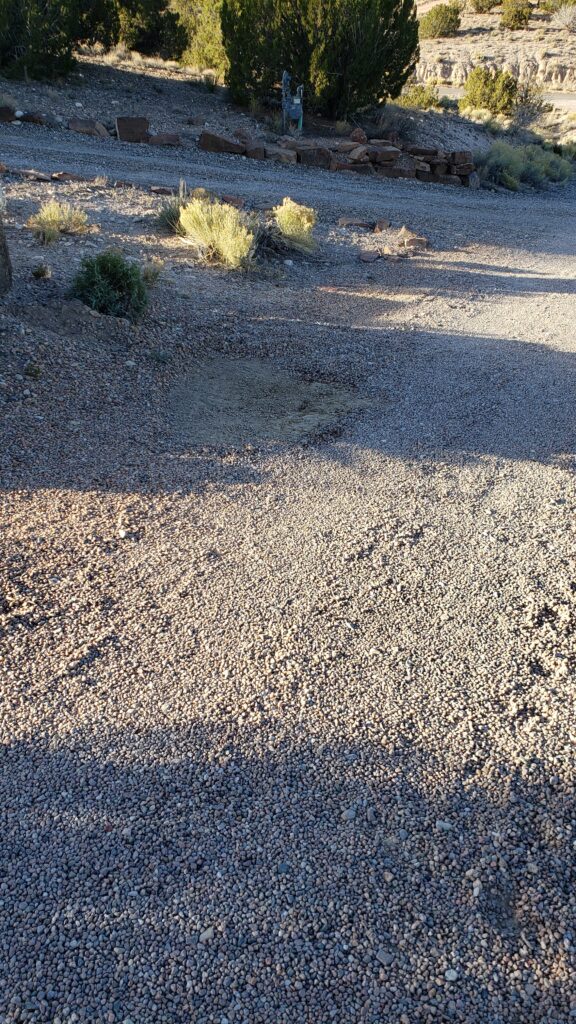
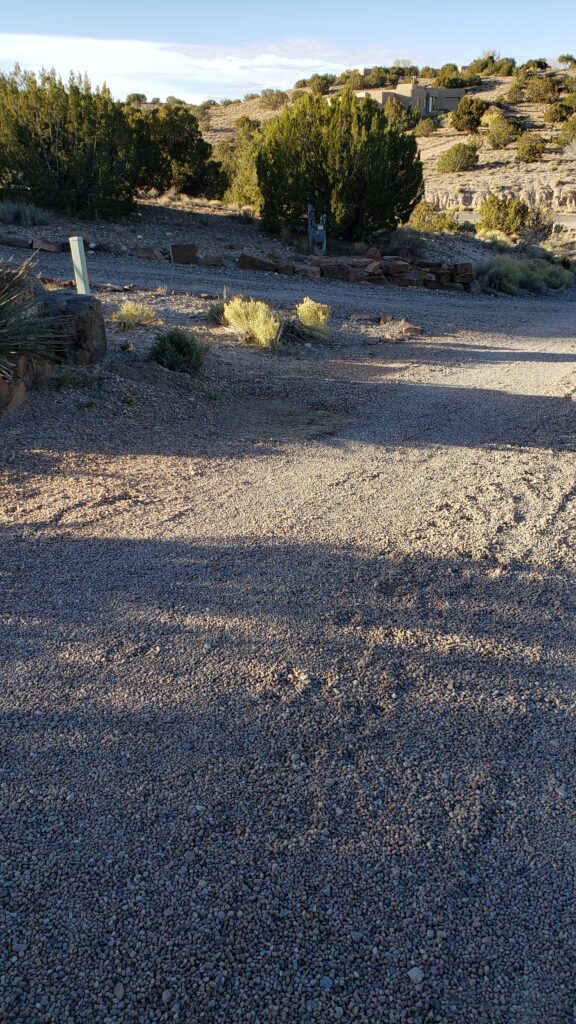
A year later, neighbors reported that it appeared worse. On 11/16/2022, Phil marked an area and called for utility locate markings. Friday, 11/18/2022, Matt dug a couple of exploratory holes, and encountered mud and visible water in one hole just at the south side of the driveway.
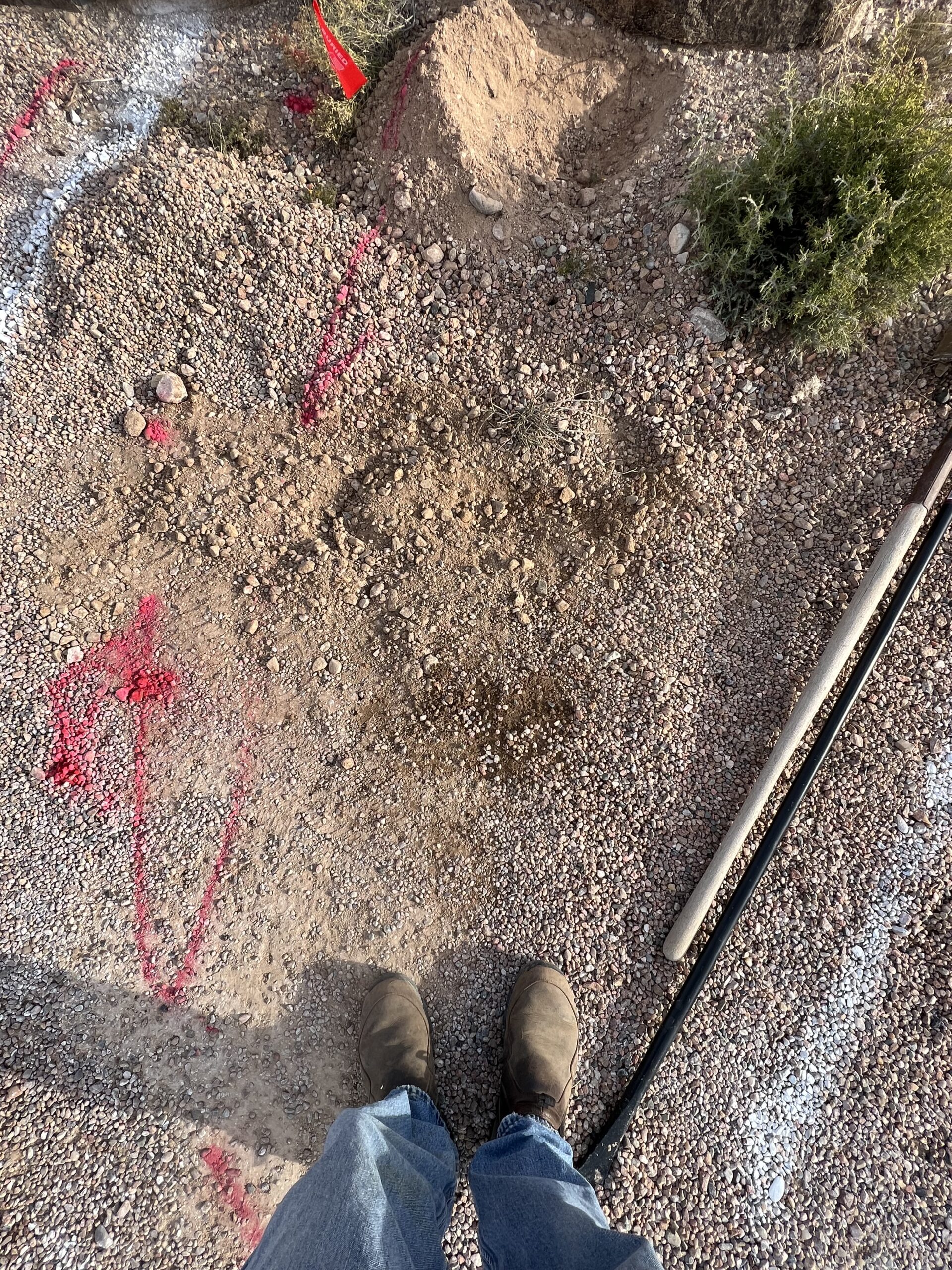
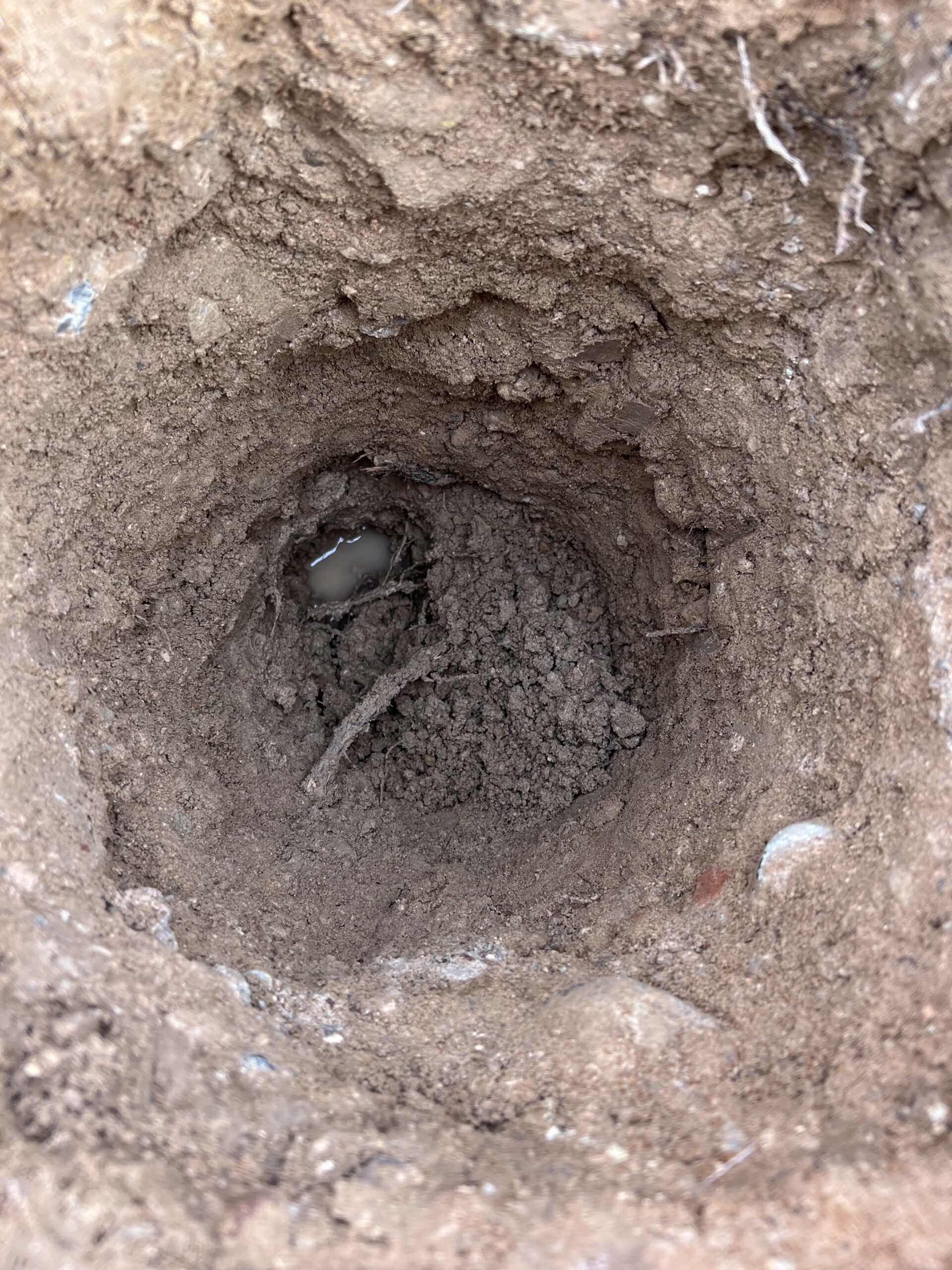
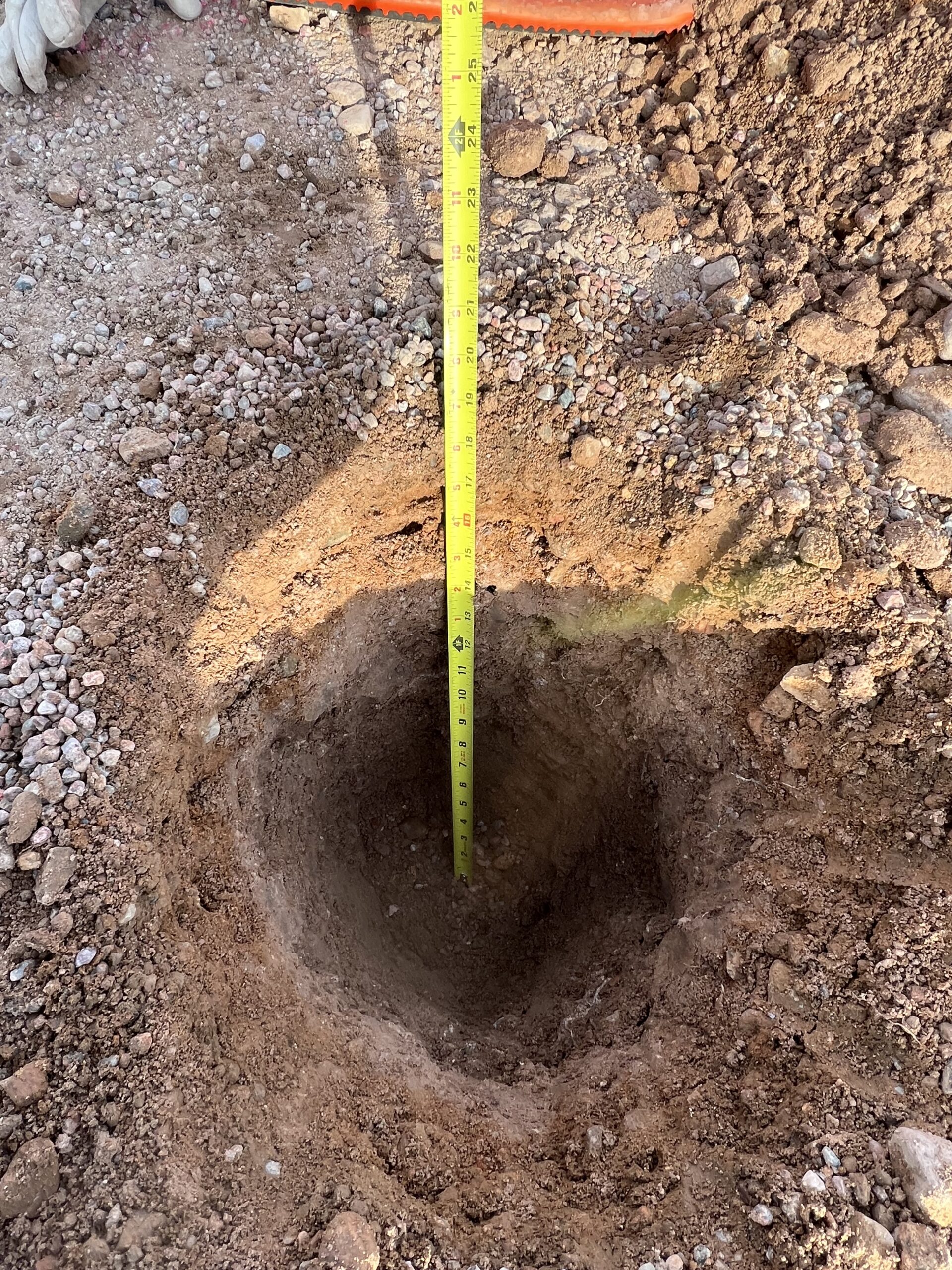

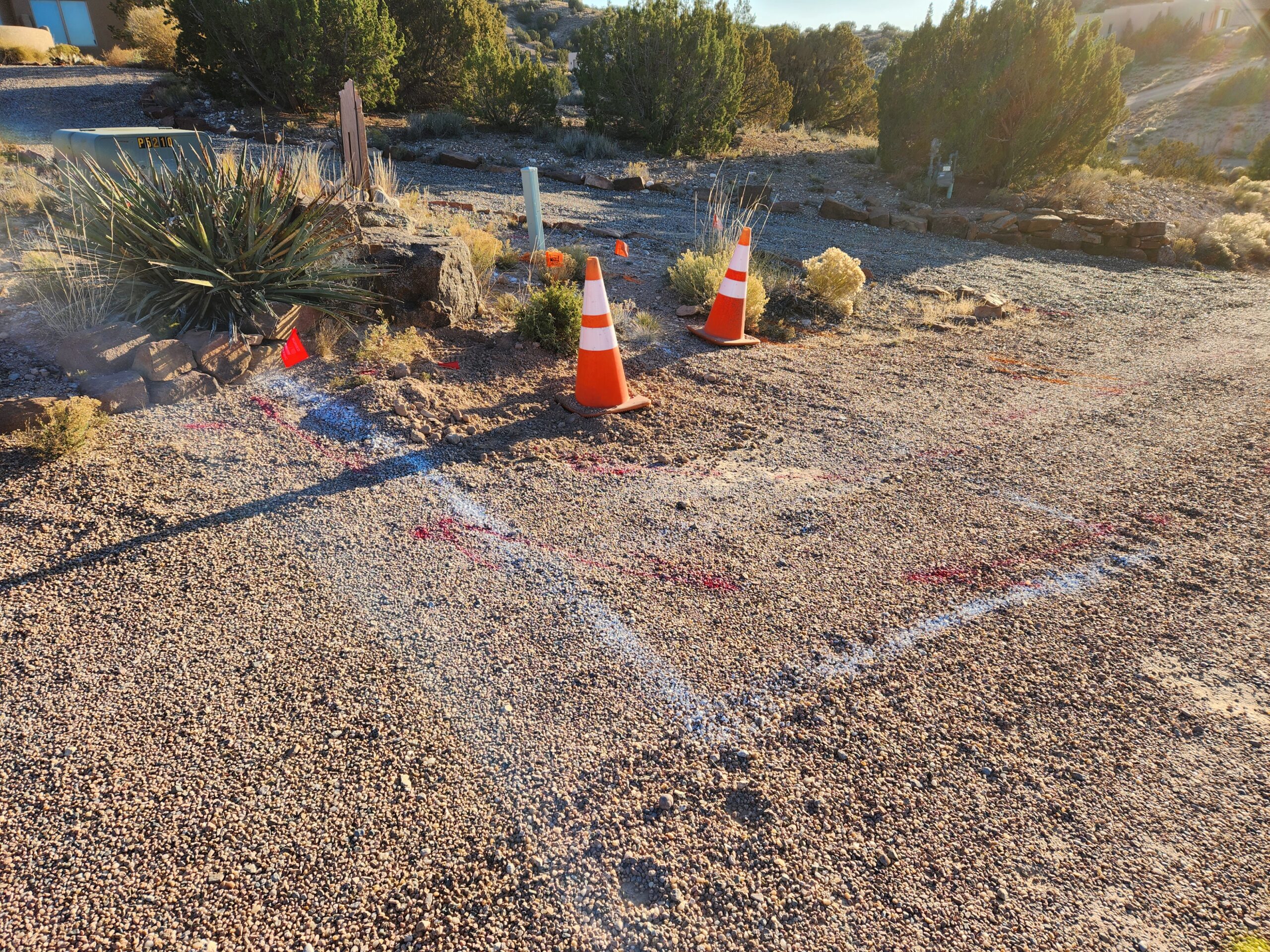
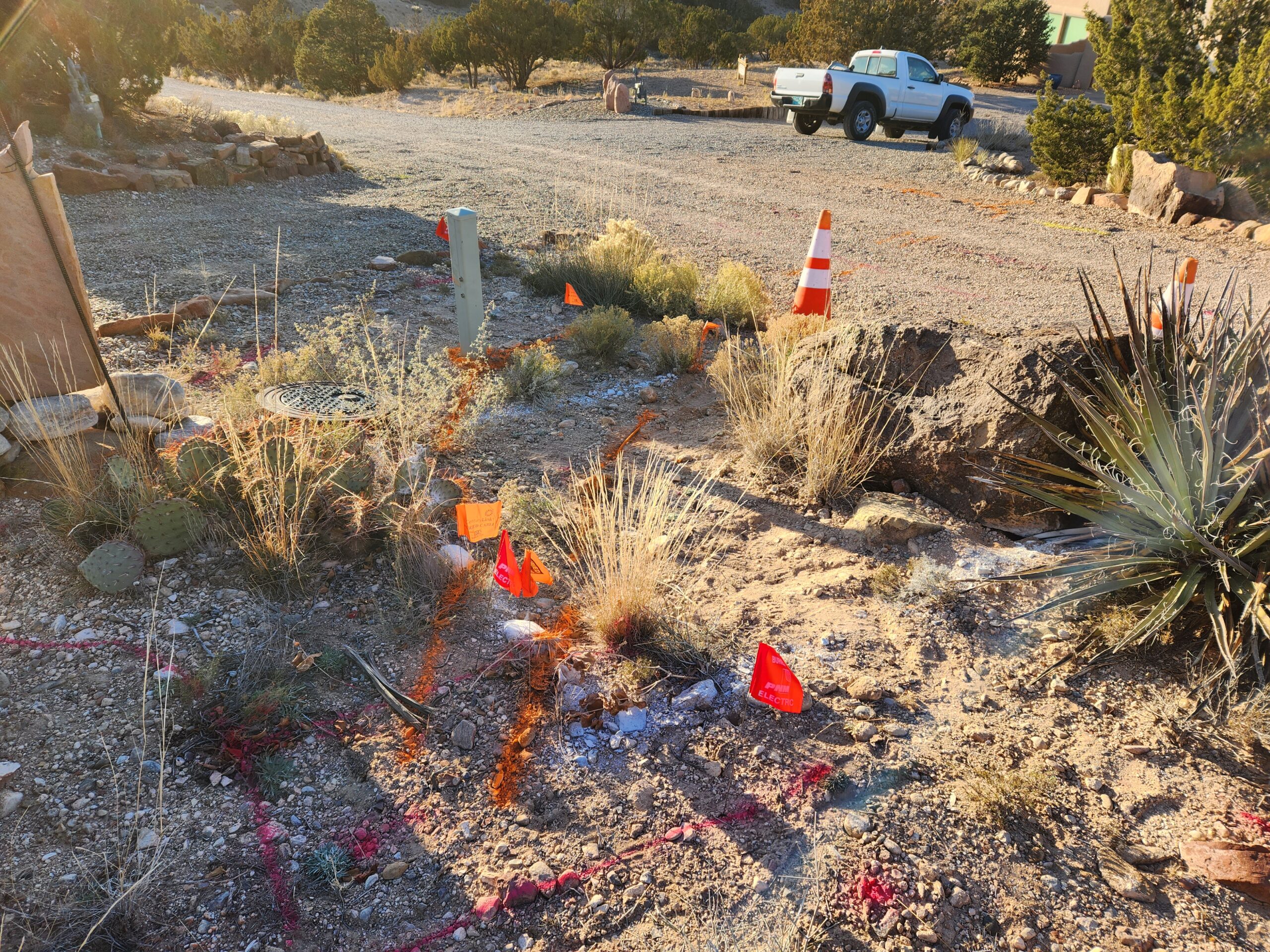
The three houses on this driveway are served from a 4″ gravity distribution line on the west part of the Camino Barranca loop. The as-built drawing shows a 2″ service line going to the three meters. Valve V-157 closes the lower (northern) part of the 4″ distribution line, but there does not seem to be a valve to close the upper (southern) part. None of the five valves (V-118, V-119, V-120, V-121, V-122) at the top of the loop appear to be on the 4″ gravity line on the west part of loop.
We confirmed that V-122 is on the booster system by opening H-09. Closing V-122 cut off flow to H-09. Mission showed a drop in booster system pressure during this test. The conclusion was that to repair the leak, closing V-118 will be necessary, turning off water to all La Mesa houses north of the storage tanks.
On 11/21/2022, Jock called William Rivera of Total Contracting Solutions (TCS) and asked that they look at the site. On Monday, 11/28/2022, a crew with a backhoe from TCS arrived on site, without warning or notice. Even though we were not prepared, Jock told them to go ahead and excavate to find the leak. They had already called in an emergency locate request, even though all the utilities were already marked. Once utility locate crews confirmed the markings, the TCS crew dug down until they located the 2″ schedule 40 PVC water line, with a very fine spray coming out of the schedule 40 PVC elbow.
Jock sent a message to everybody on the alert list in La Mesa gravity and Calle Cienega alert zones that there may or will be a water outage.
The TCS crew had brought poly tubing and fittings since that was needed on a repair that they had done on Dustin Court. They did not have PVC fitting. From the tank site we got glue, primer, a schedule 80 PVC elbow, some pipe, and a couple of couplings from the W3ATF site. The TCS crew prepared the schedule 80 PVC elbow, pipe, and couplings.
The shutdown plan, worked out by Phil to minimize the amount of water to drain, consisted of:
- Turn off well #5 at the storage tank control panel and at the well site
- Attach a drain hose to the line in the well #2 vault
- Open the well #2 valve (V-117), and flush the line to the well
- At Camino Barranca and Calle Cholla, close the east (V-126) and north (V-127) valves
- At Camino Barranca and Calle Corvo, close the east (V-149) and north (V-150) valves
- At Camino Barranca and Camino Manzano, close the north (V-156), south (V-157) and west (V-158) valves
- At Camino Manzano and Calle Corvo, close the east (V-146) valve
- At the top of the Camino Barranca loop, close the main 6″ (V-118) valve
- Open hose bibs at houses around the leak (148, 150, and 150B)
After some time, flow to the house hose bibs slowed, but did not stop. The conclusion was that V-118 was not completely sealing. The upstream valve, V-107, across from the tank site was closed. This still did not get flow to stop around the leak; when the TCS crew cut into the old pipe, their hole filled with water. After pumping out the hole, water was still coming out of their cut. At Camino Barranca and Calle Corvo, V-150 was opened, and water was drained through H-11. (Not clear if the north and south valves at Camino Barranca and Camino Manzano (V-156 and V-157) were opened. This stopped flow at the leak enough that the TCS crew could make the repair by gluing in the made up schedule 80 PVC elbow, pipe, and couplings.
When hydrant H-11 was open, the initial water coming out was noticeably brown with sediment. It seemed to gradually clear. No samples were taken. Analysis of the distribution system indicated that the segment of the 4″ main on Camino Barranca between Camino Manzano and Calle Corvo may become stagnant during normal operation due to the few houses along this segment and the loop on Calle Corvo. If this is the cause of the dirty water, V-149 at Camino Barranca and Calle Corvo should be closed when hydrant H-11 is flushed so that this stagnant segment gets flushed.
The startup process was the reverse of the above:
- Open the valve (V-117) and hose at well #2 to let any air out
- Open hose bibs at houses around the leak
- Crack open V-107 (three turns)
- Crack open V-118
- Open valves on Camino Manzano, Camino Barranca, Calle Corvo, and Calle Cholla that had been closed
- Open V-118 fully
- Open V-107 fully
- Close house hose bibs when no longer get any air out
- Turn off and remove hose at well #2 and close V-117
- Turn well #5 back on
- Try letting any air out from the highest house in the area: Phil Messuri at 10 Camino Sandia.

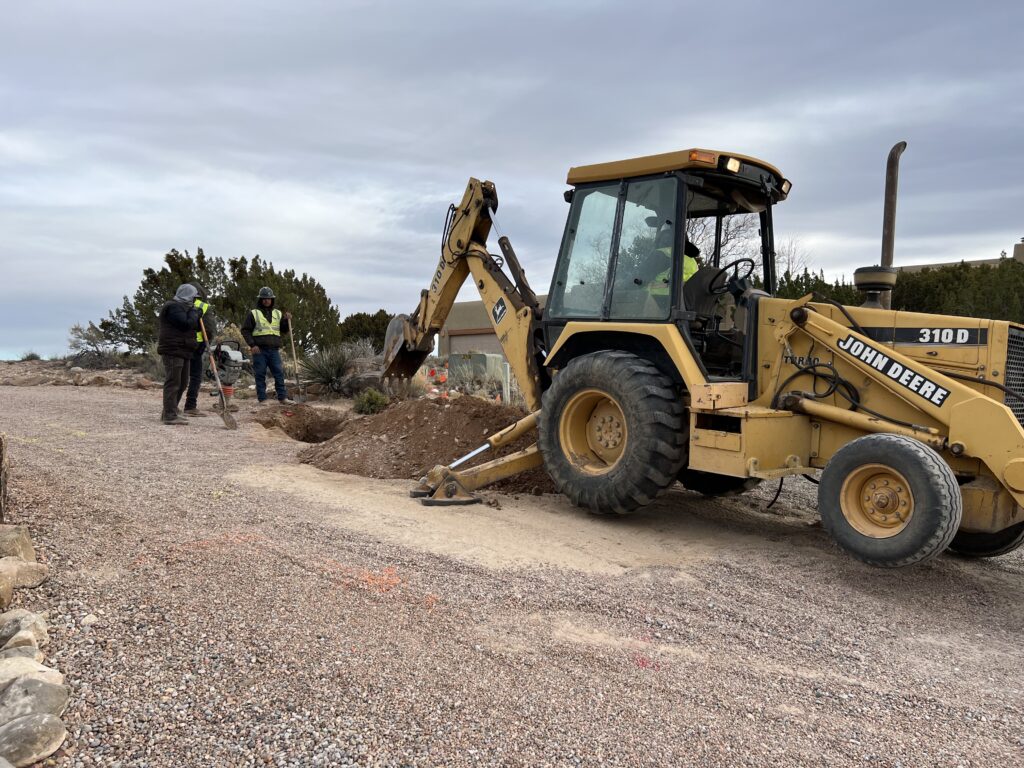
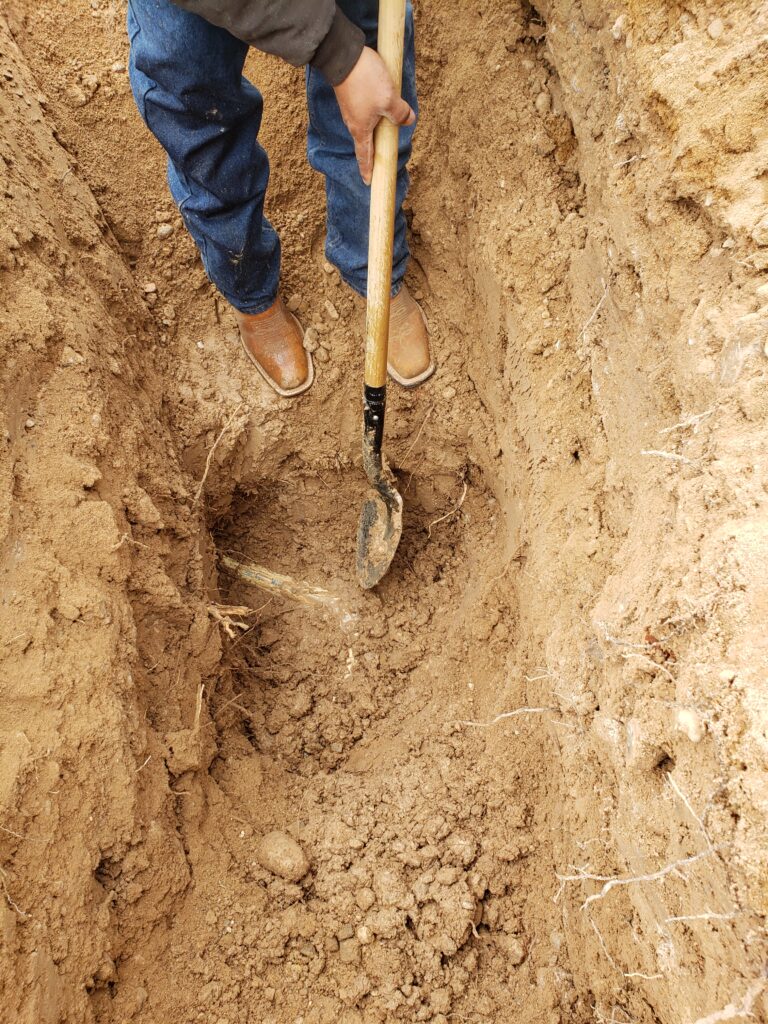
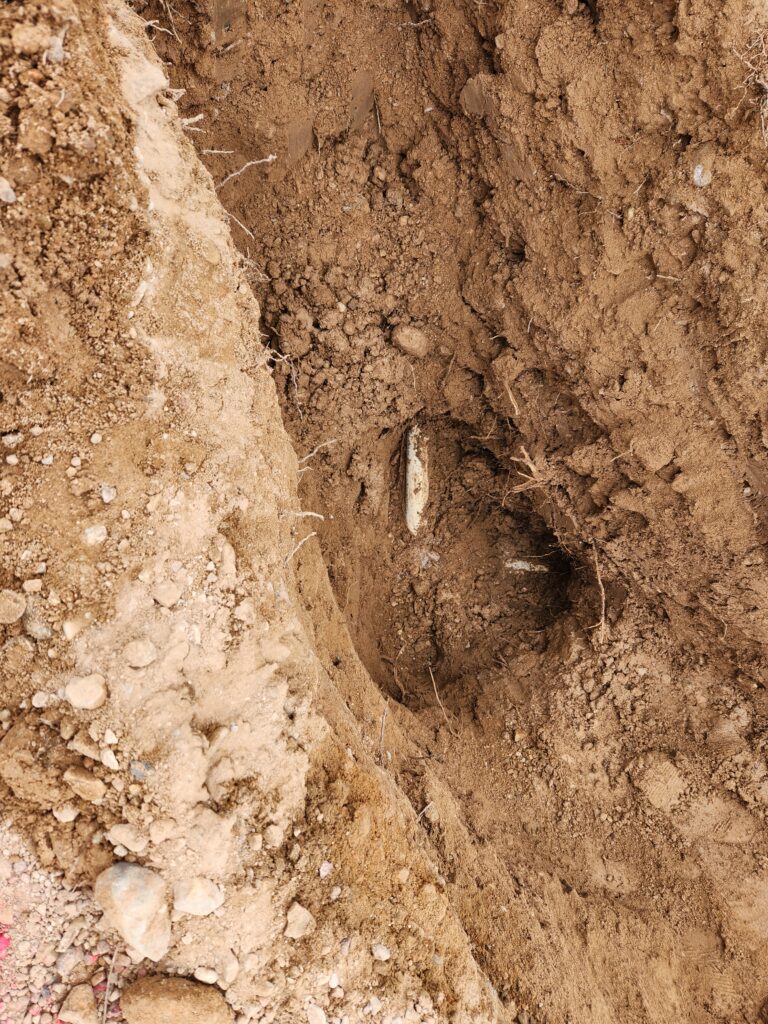
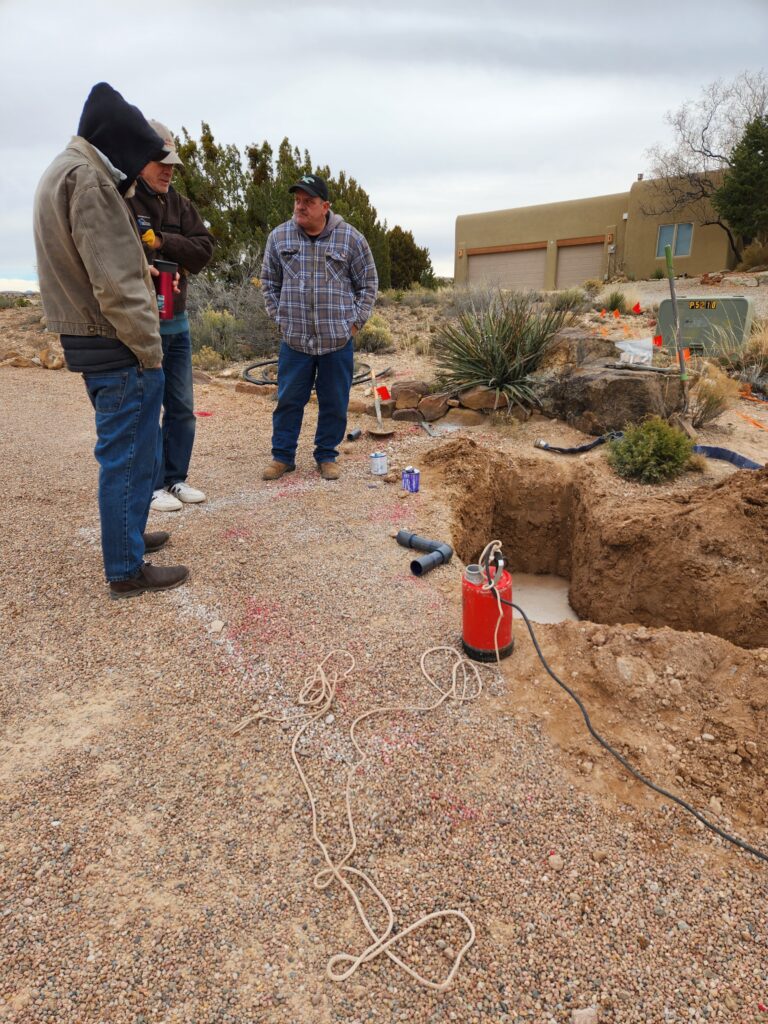
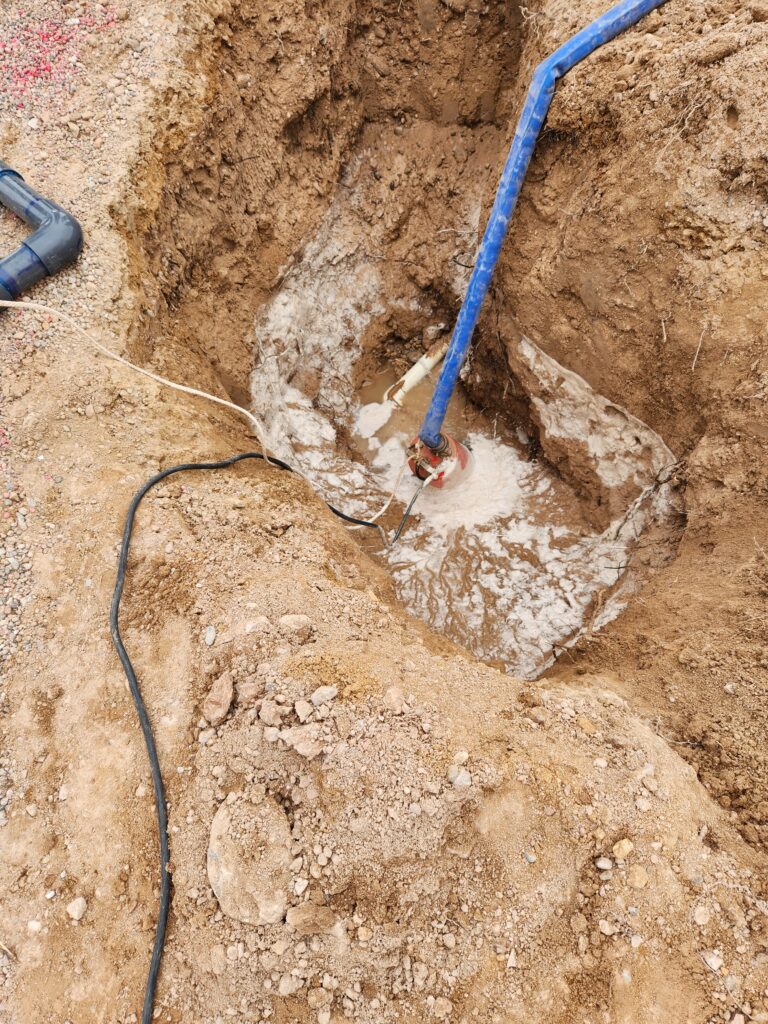
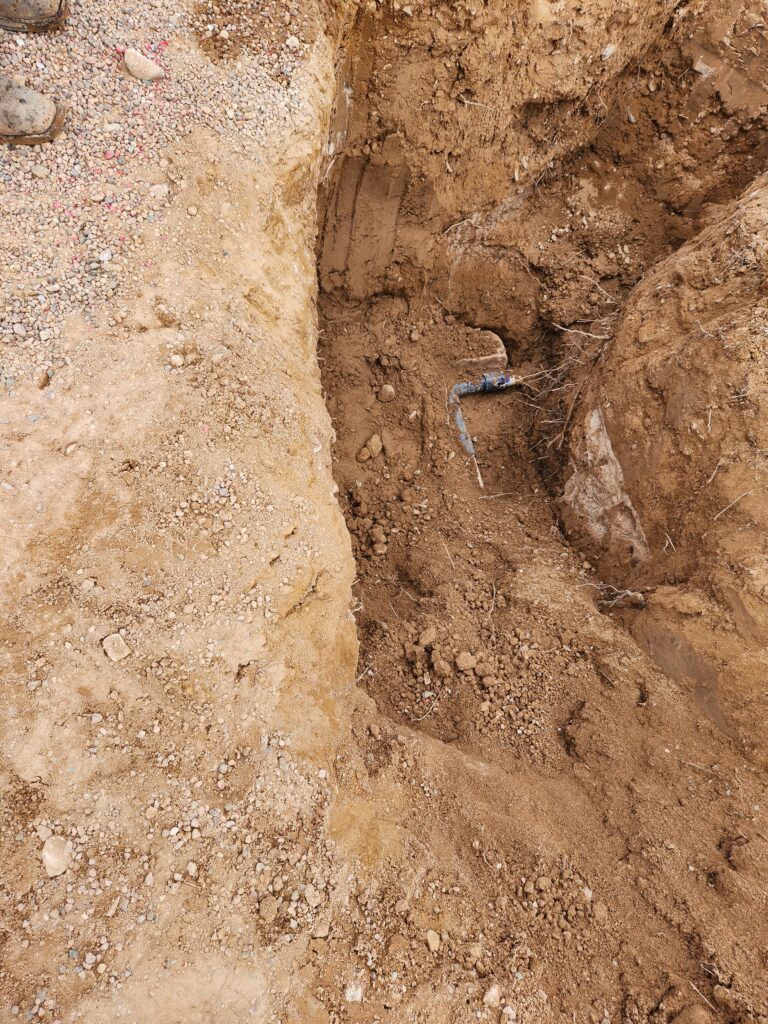
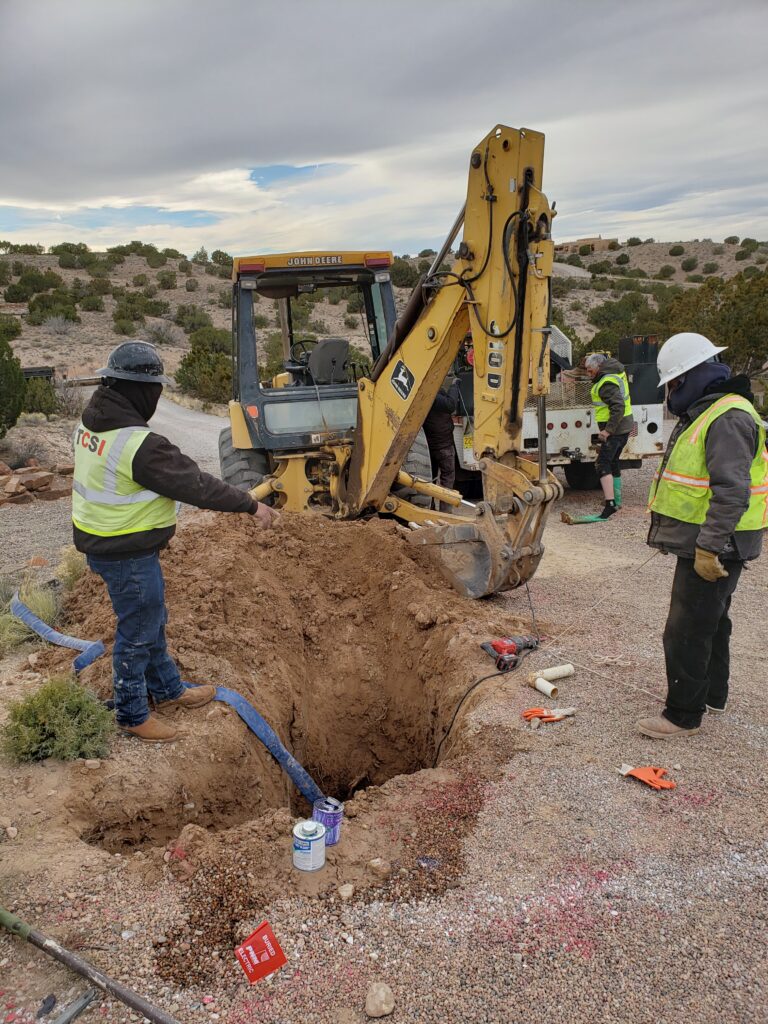

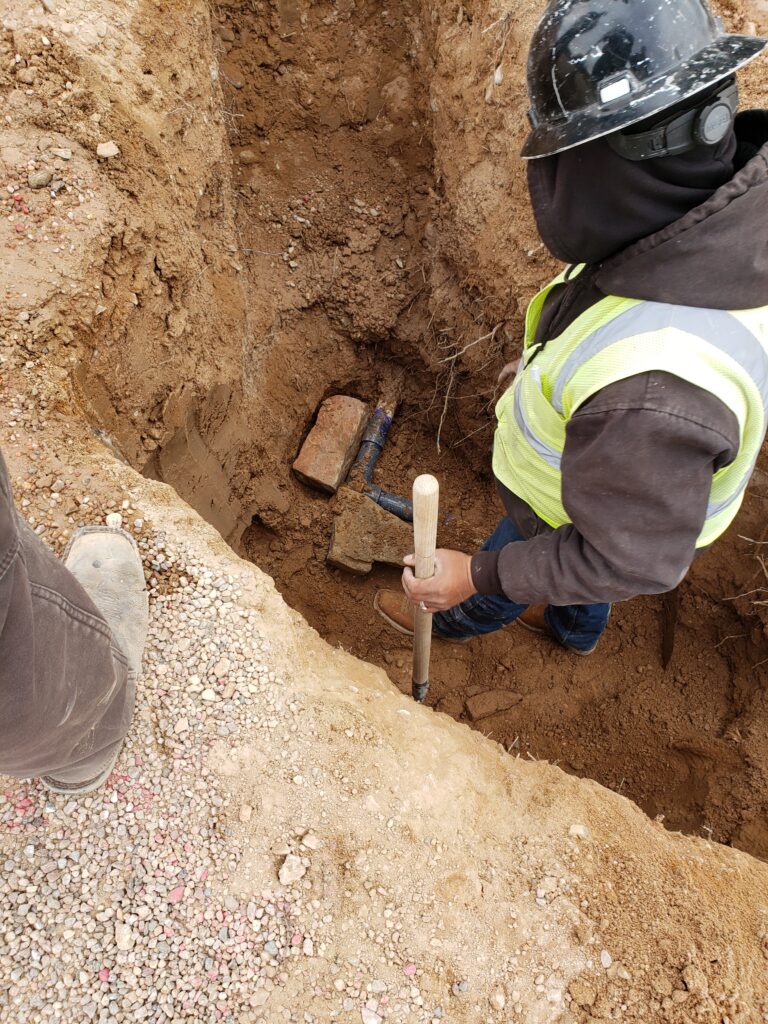
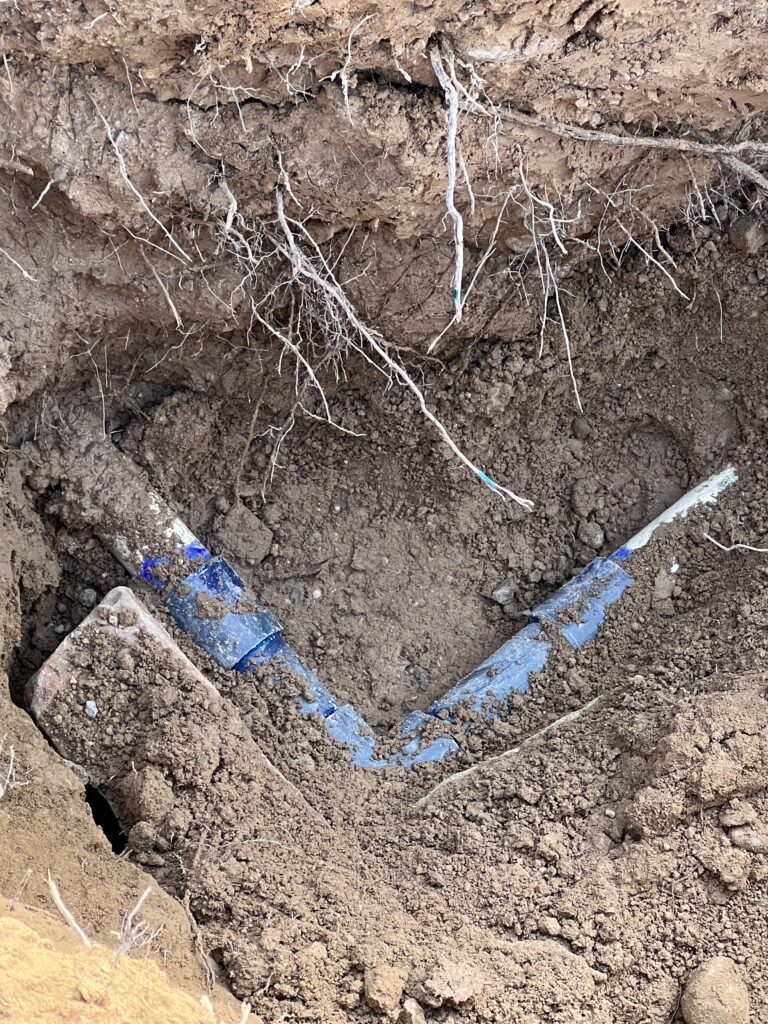

To get dry dirt to fill the hole, Ray led the backhoe driver to the arroyo in front of his house. The TCS crew filled and tamped their excavation.
After repair was complete, John provided some analysis. From the Google Earth map of the LMWC distribution system, the point on the 4″ line on Camino Barranca downstream of V-118 that is at the same elevation as the leak (5,475′) is about 575 feet from V-118 (at Elev. 5,513′). This point is where the water in the 4″ line has to drop from V-118 to stop overflow at the leak. 575 feet of 4″ pipeline contains about 375 gallons of water. This large volume would explain some if not all the time required to drain the 4″ line through the garden hoses. Initially, the flow rate out of the hoses was pretty high, but as the water level dropped in the pipeline, the flow through the hoses decreased to a trickle, which extended the draining time.
Learning – Steps for next incident
Preparation
- Identify all valves that will or may have to be closed. Take into account valves that may not shut water off completely.
- Identify affected houses.
- Notify residents, with error on the side of notifying more people.
- Plan for draining water out of affected pipe(s). Calculate expected volume, and try to use hydrant(s), or replace a downstream house meter with a hose.
- Plan for where air will be let out when system is restarted
- Accumulate repair materials and supplies
- Pipe, fittings, couplings, etc.
- Concrete blocks for thrust blocking and valve support
- Tarps
- Sample bottles
- Road marking cones
- Prepare tools: generator, power cords, pumps
- Coordinate contractor and volunteers
- Review plan, with contingencies, with people on site
With water shut off
- Collect samples from any open hydrants since they may see unusual flow pattern
- Emphasize patience in letting system drain
- Set up to pump out excavation before making any pipe cuts
- Take time to make quality repair
Restarting system
- Emphasize need to start slow
- Do not backfill excavation until repair is at full pressure
- Make sure all valves are returned to normal
